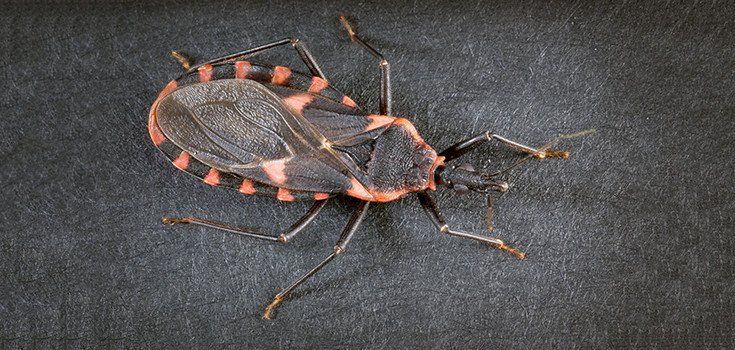Rare Diseases like Chagas and Leprosy are Becoming more Commonplace in the U.S.

They might be called kissing bugs, but you don’t want a kiss from the triatomine bug. The ugly, winged creatures carry Chagas disease, and it’s spreading so quickly through the southern U.S. that researchers are calling it the new AIDS in the Americas. [1]
Chagas was a once-obscure disease. Found primarily in Latin America and the Southwest, the symptoms of the disease include fever, headache, nausea, and other flu-like symptoms. The disease, which is actually caused by a parasite carried by kissing bugs, can grow serious quickly, causing sudden-onset heart attacks and intestinal problems. According to a National Institutes of Health, Chagas could kill as many as a third of the individuals infected with it in Latin America.
Despite their friendly-sounding nickname, kissing bugs are referred to as such from the fact that triatomine bugs tend to bite humans on or near the mouth. More than 130 species of kissing bugs are literal bloodsuckers, and several of them carry a parasite that causes Chagas. Bed bugs and coyotes can also carry the disease.
Researchers recently found outbreaks of Chagas in northern Virginia, and it is believed the disease was brought in by people from other countries.
In the U.S., as many as 300,000 people are thought to carry Chagas, according to CDC estimates. Only 28 cases have been acquired here, with the rest believed to have been imported from Latin America. [1]
“Because it’s not notifiable in key states where the bug lives and many infections have not been identified, the burden (incidence) among non-Latin Americans is not known,” Sue Montgomery of the CDC explained to The Post and Courier in Charleston, South Carolina.
Chagas is a puzzling conundrum for health officials because so little is known about the disease in the U.S. What is known is that, like AIDS, Chagas can be spread through the blood of an infected person, earning it the moniker “the new AIDS in the Americans.” That, and the fact that it is spreading so rapidly throughout the hemisphere.
But it’s not the kissing bugs themselves that have scientists so worried.
“Most humans are unlikely to get bitten (by the bug),” said Brian Scholtens, College of Charleston entomologist. “It is more likely that the other hosts would be involved in the overall increase in transmission rates, and humans may be more at risk from infected blood supplies if we don’t start routinely screening for the parasite.”
Leprosy has also made an appearance in Florida this year, where 9 people were diagnosed with the skin disease. One carrier of the illness is the armadillo, which have become commonplace in the south, though scientists aren’t certain how the 9 Floridians became infected.
Newsweek reported in July that health officials in Florida were urging residents to stay away from armadillos over suspicion that the shelled creatures had something to do with the outbreak of leprosy. Dr. Sunil Joshi of the Duval County Medical Society in Jacksonville told CNN that the number of leprosy cases could be increasing due to real estate development destroying the armadillos’ homes, causing them to be around more people during the daytime. Florida generally sees about 10 cases of leprosy a year.
Leprosy is caused by Mycobacterium leprae bacteria, which can be transmitted through fluids from the nose and mouth. Since armadillos spit, animal experts are warning people who live in areas with a large armadillo population to steer clear of them.
Leprosy causes skin lesions that can cause permanent disfigurement; damage to the peripheral nervous system, eyes and nasal passages; collapsed facial features, and claw-like hands. The incubation period for leprosy can last between five and 20 years. The disease can be treated with a course of antibiotics lasting between six months and two years.
Sources:
